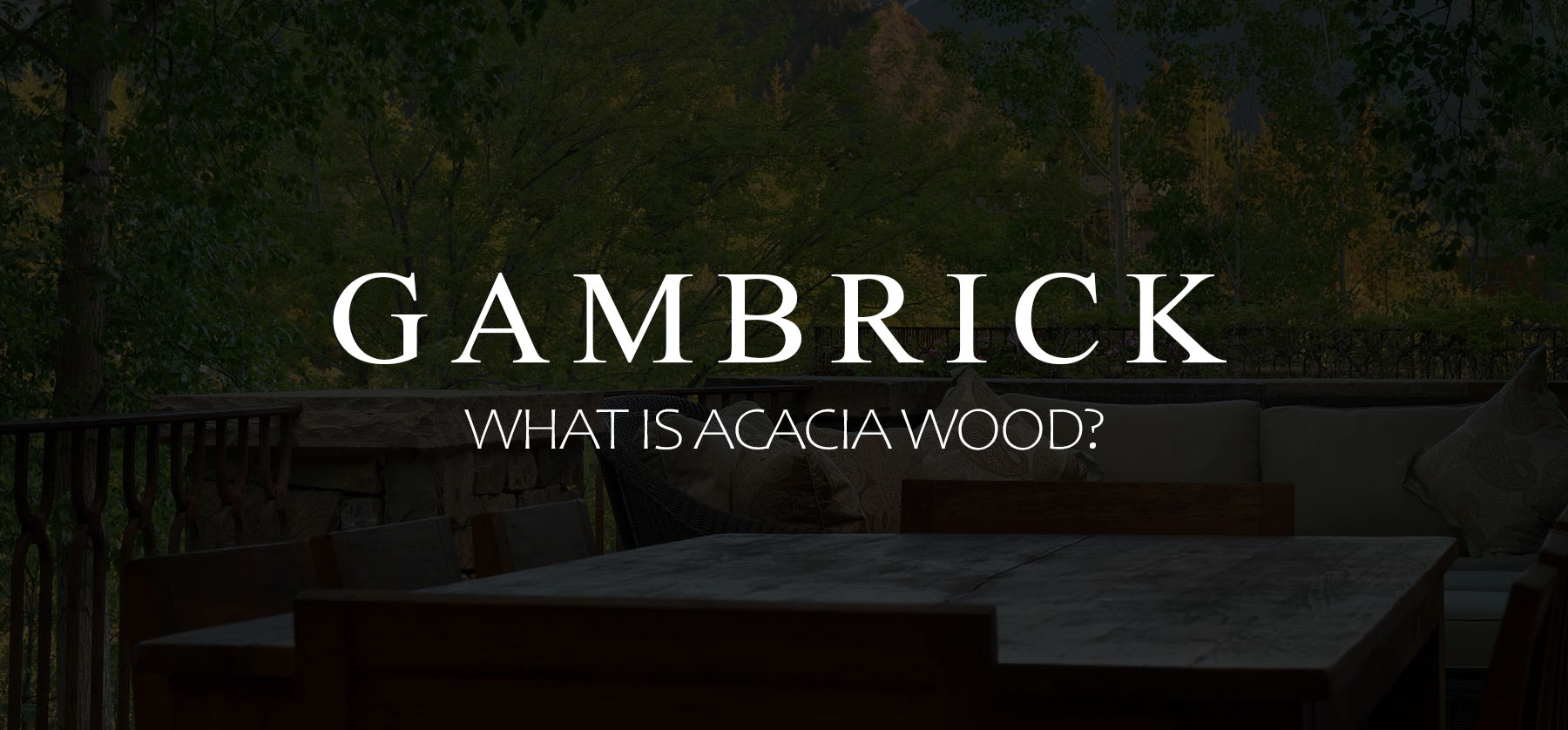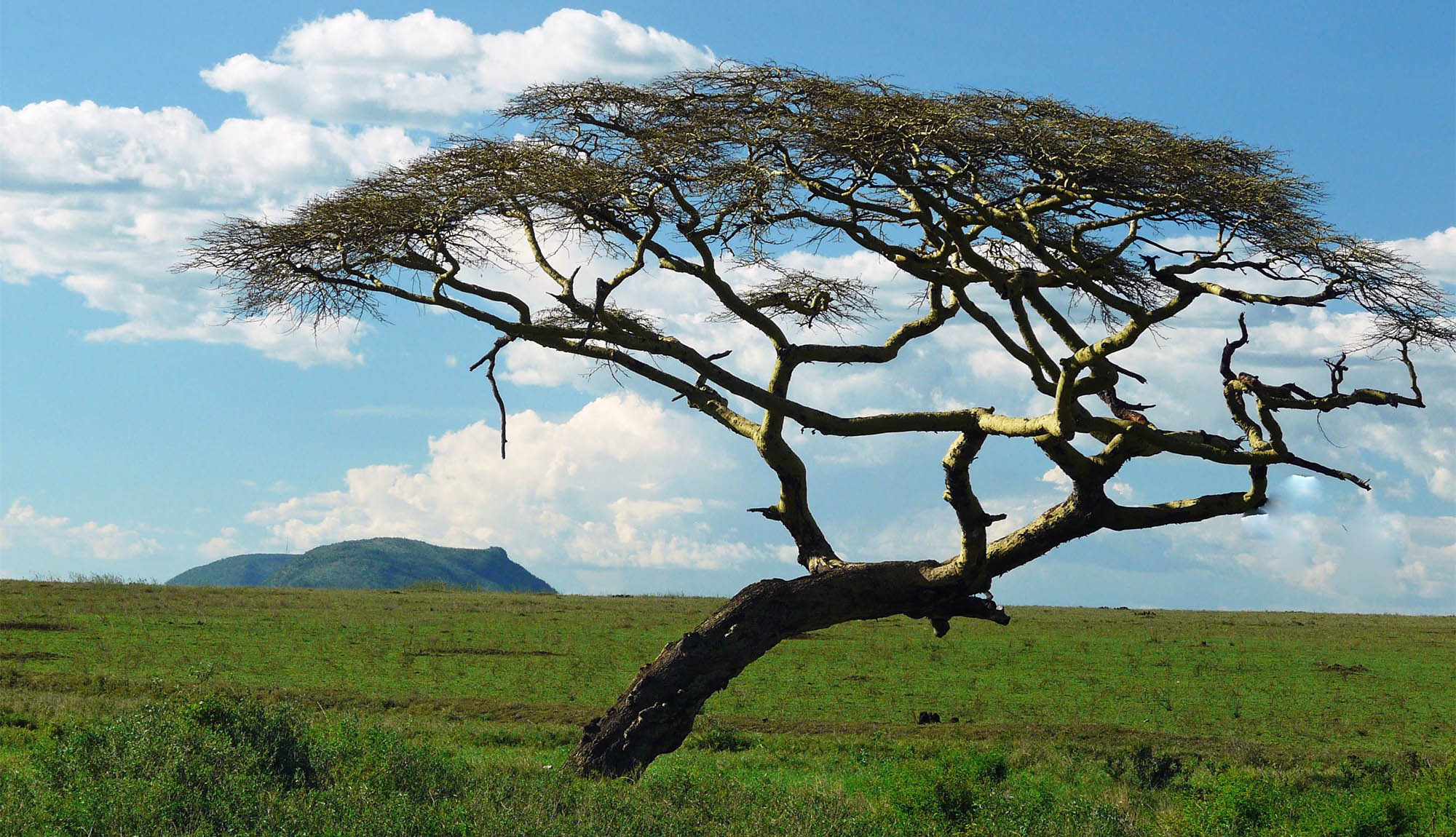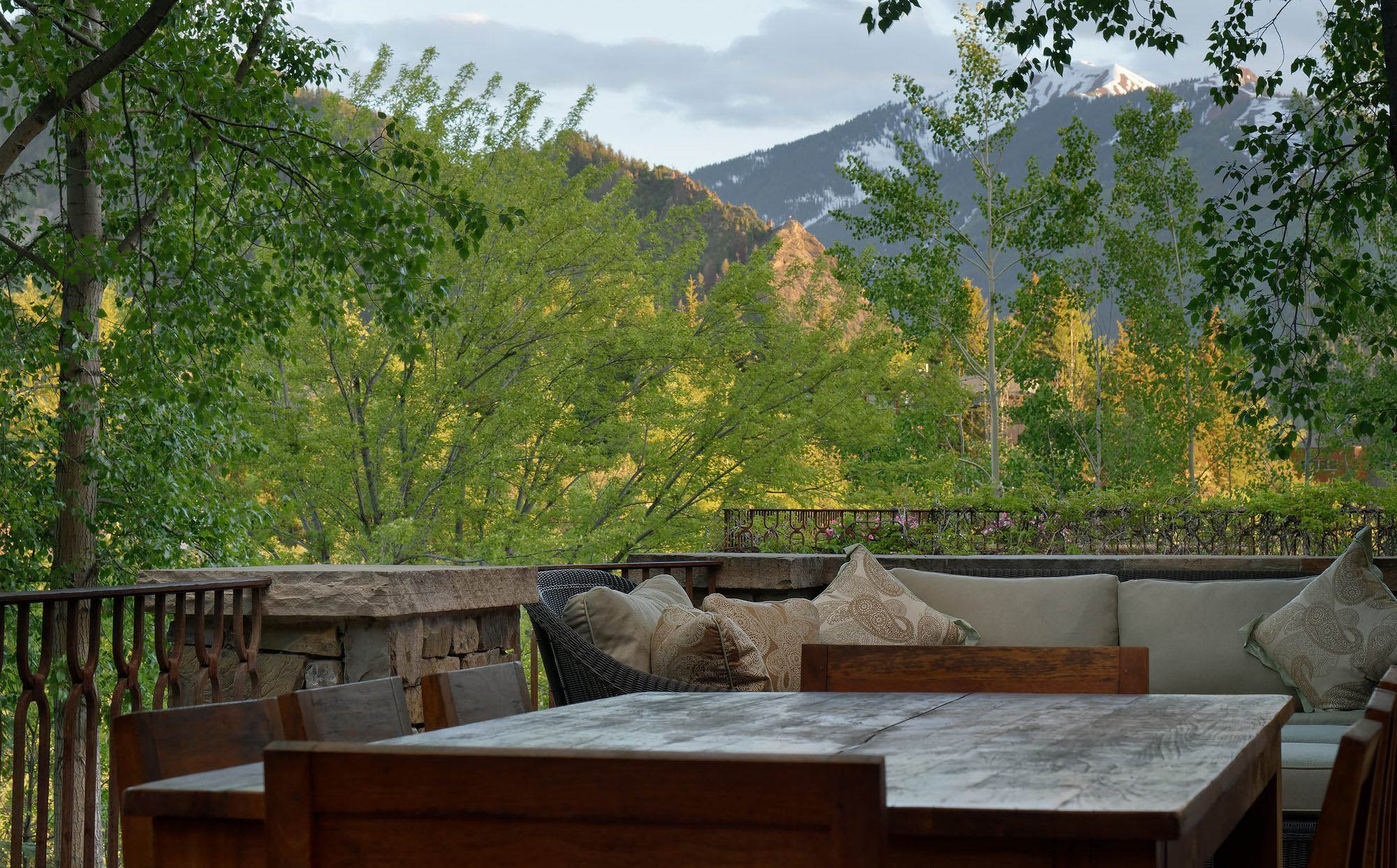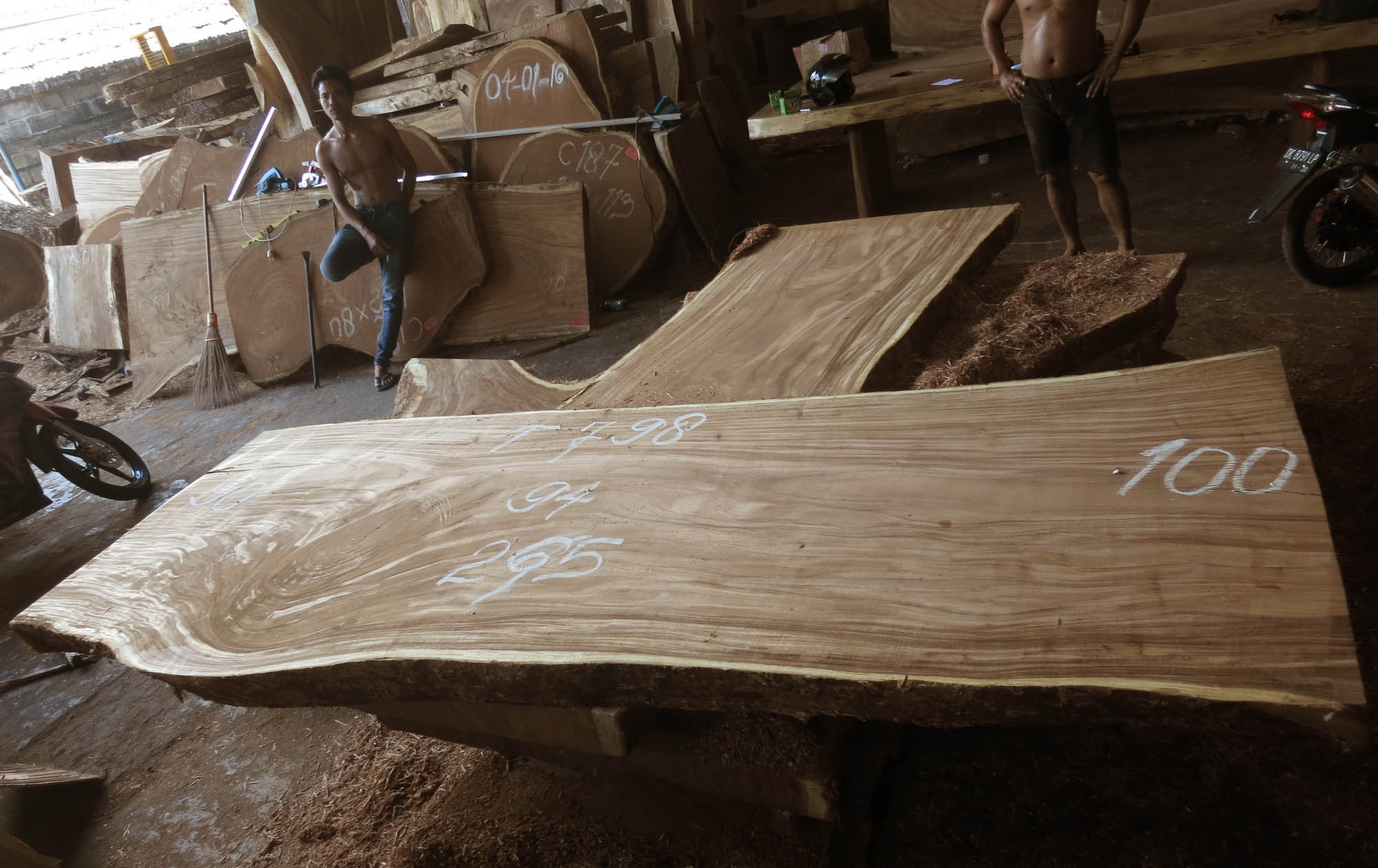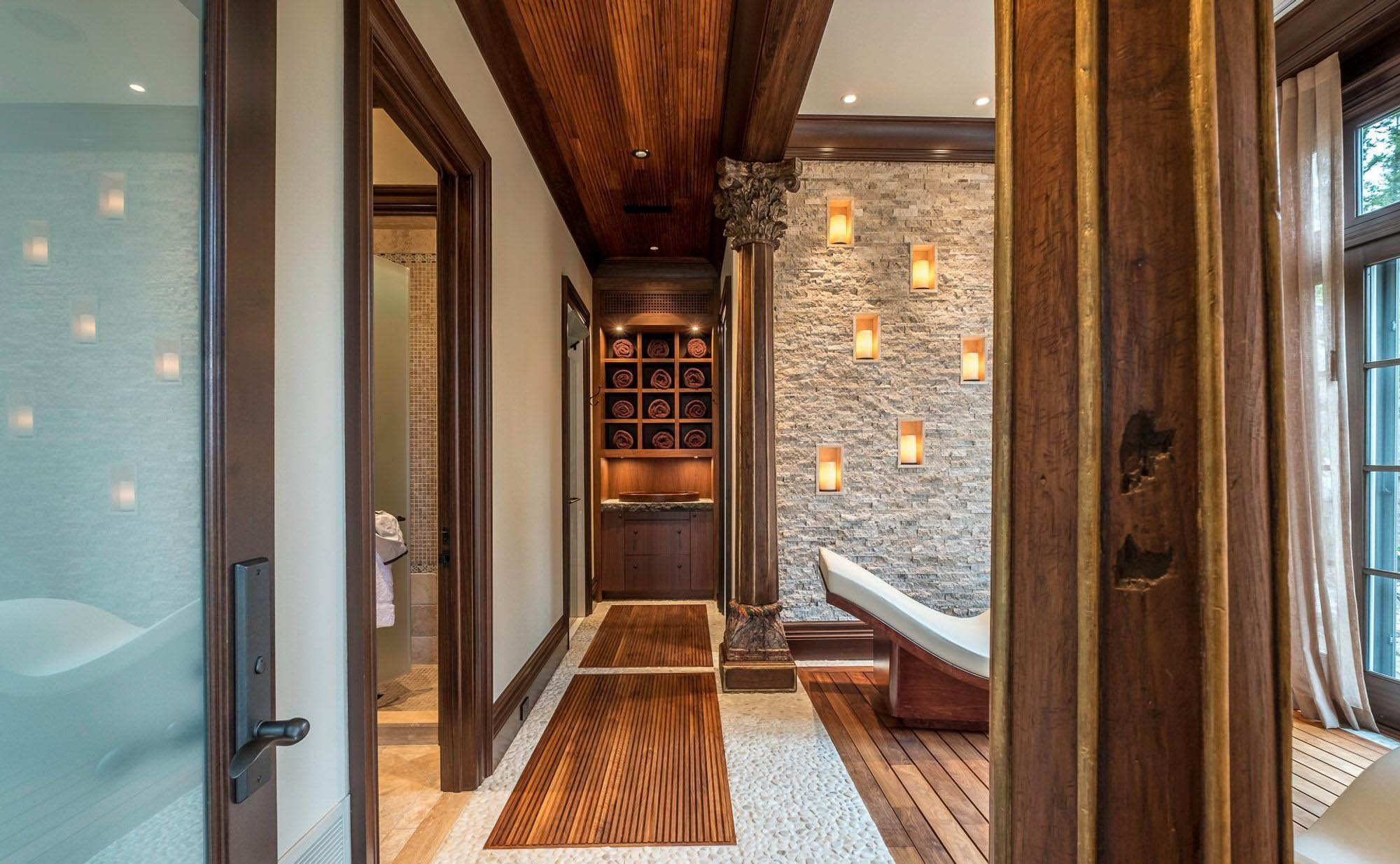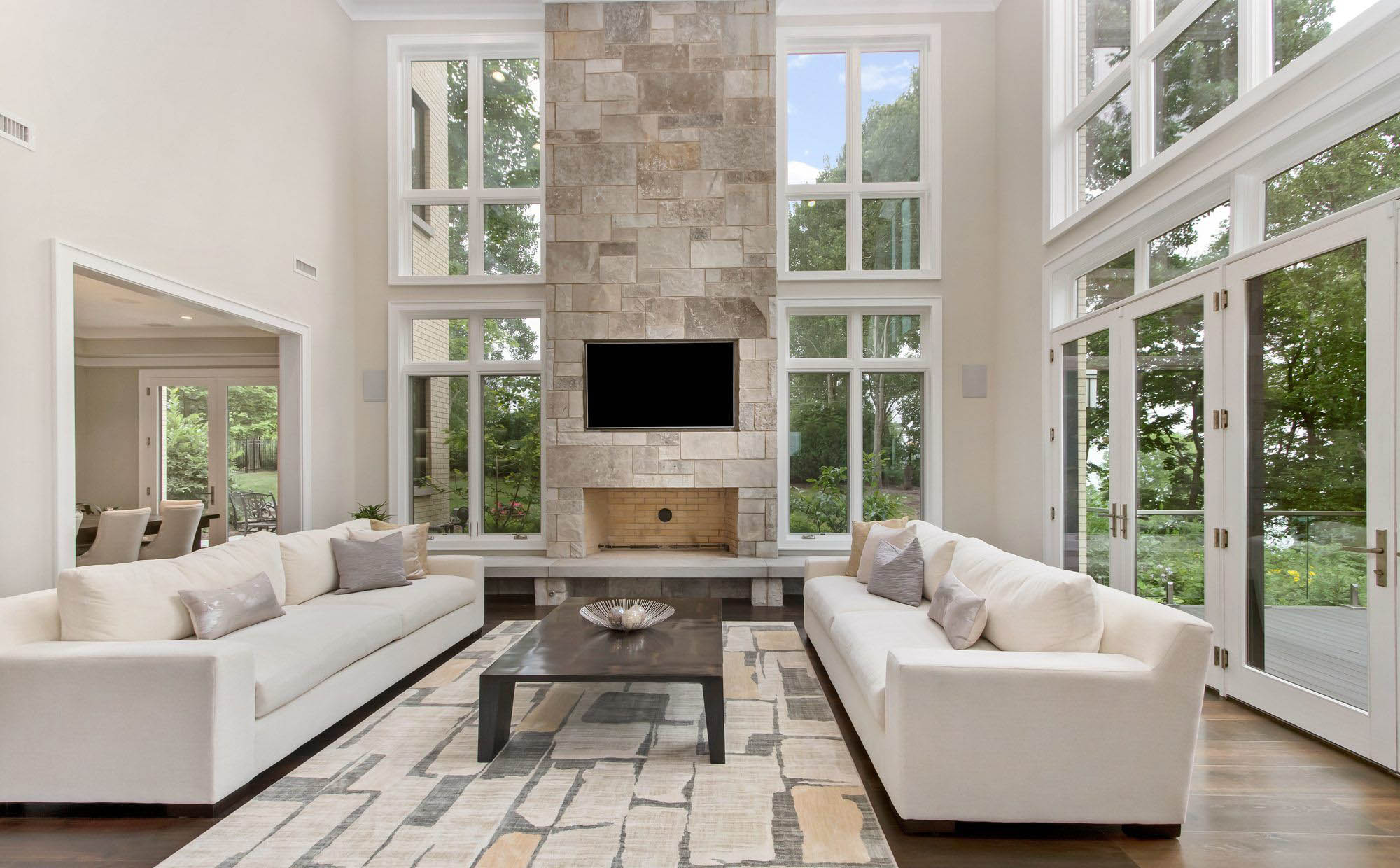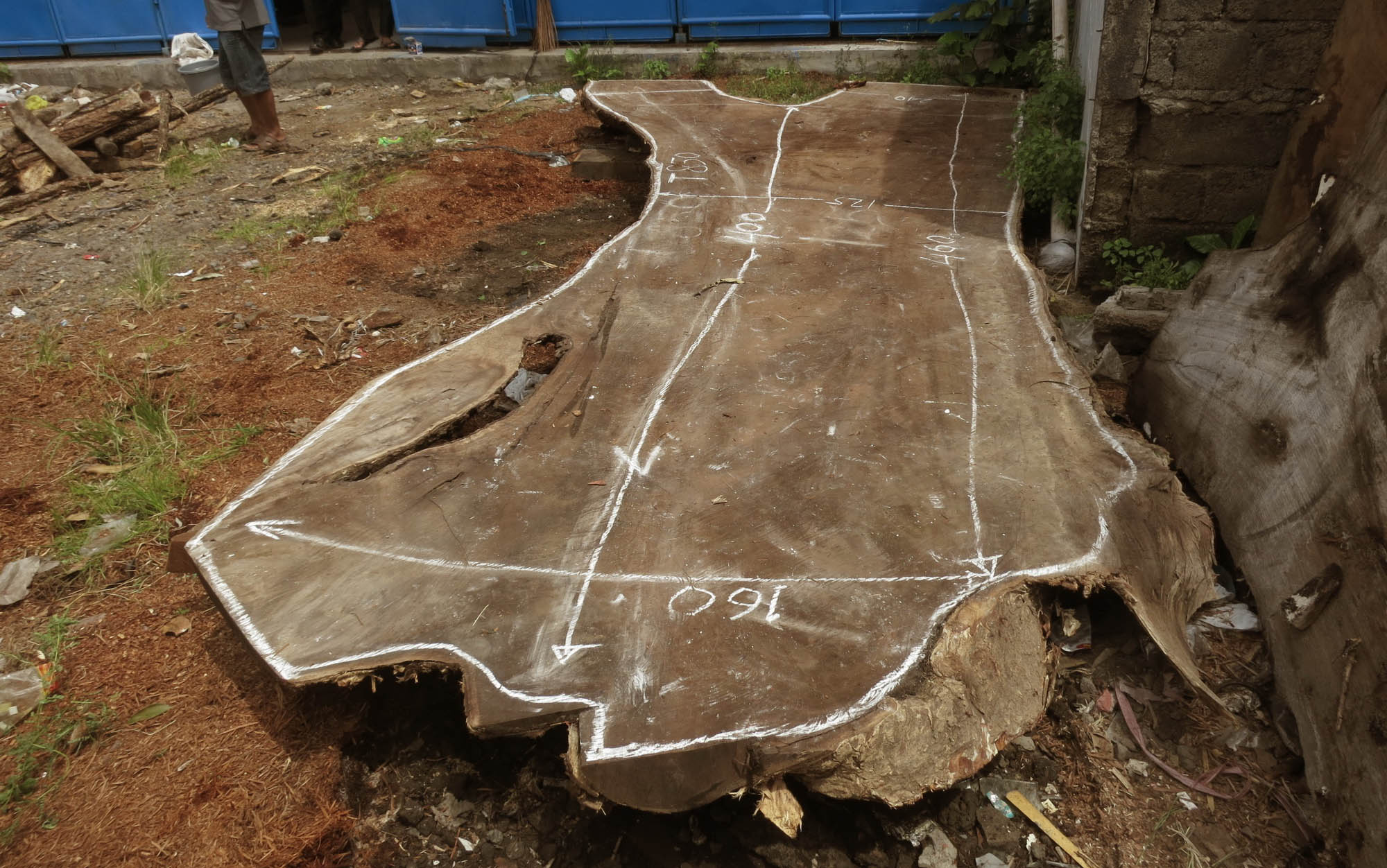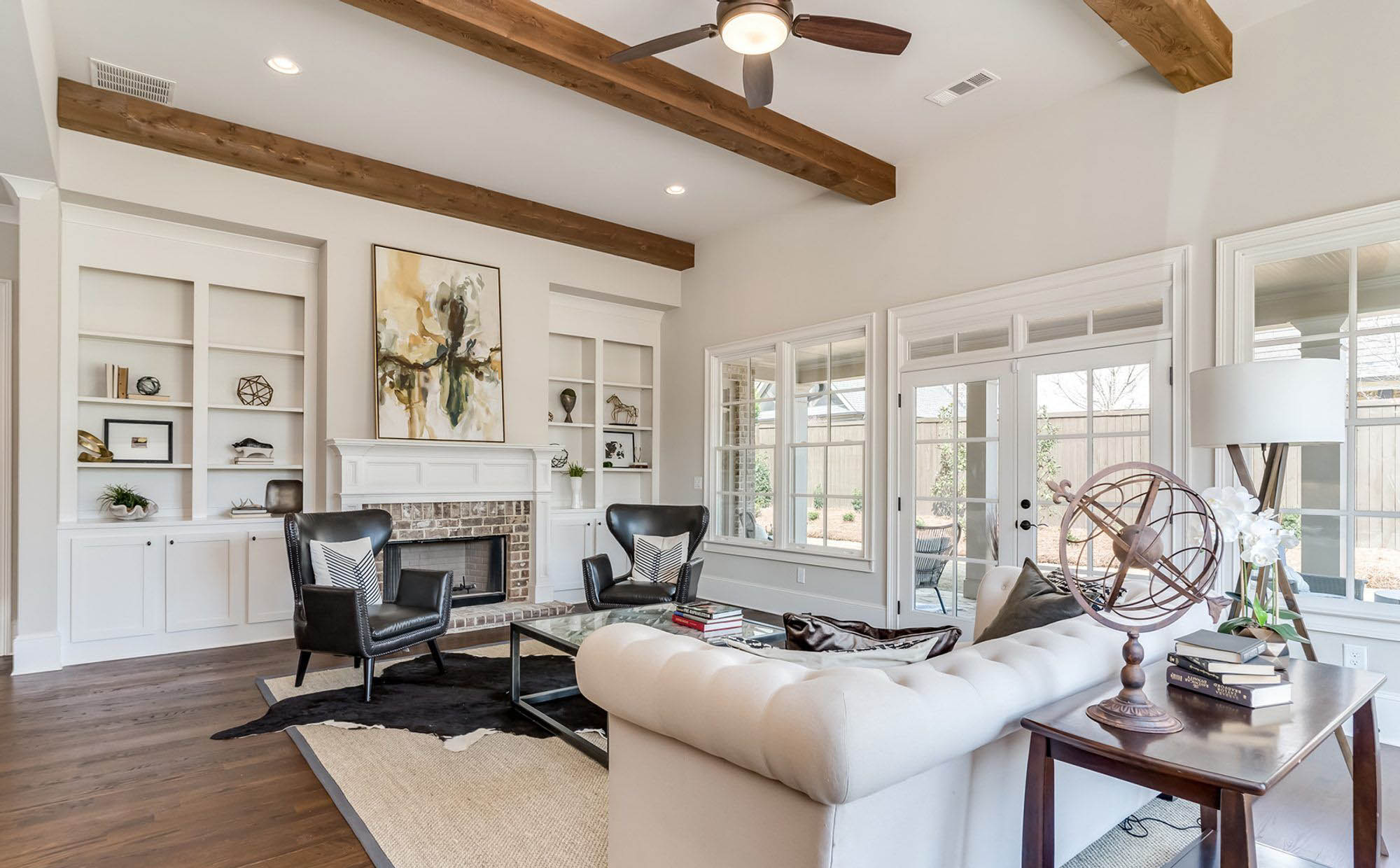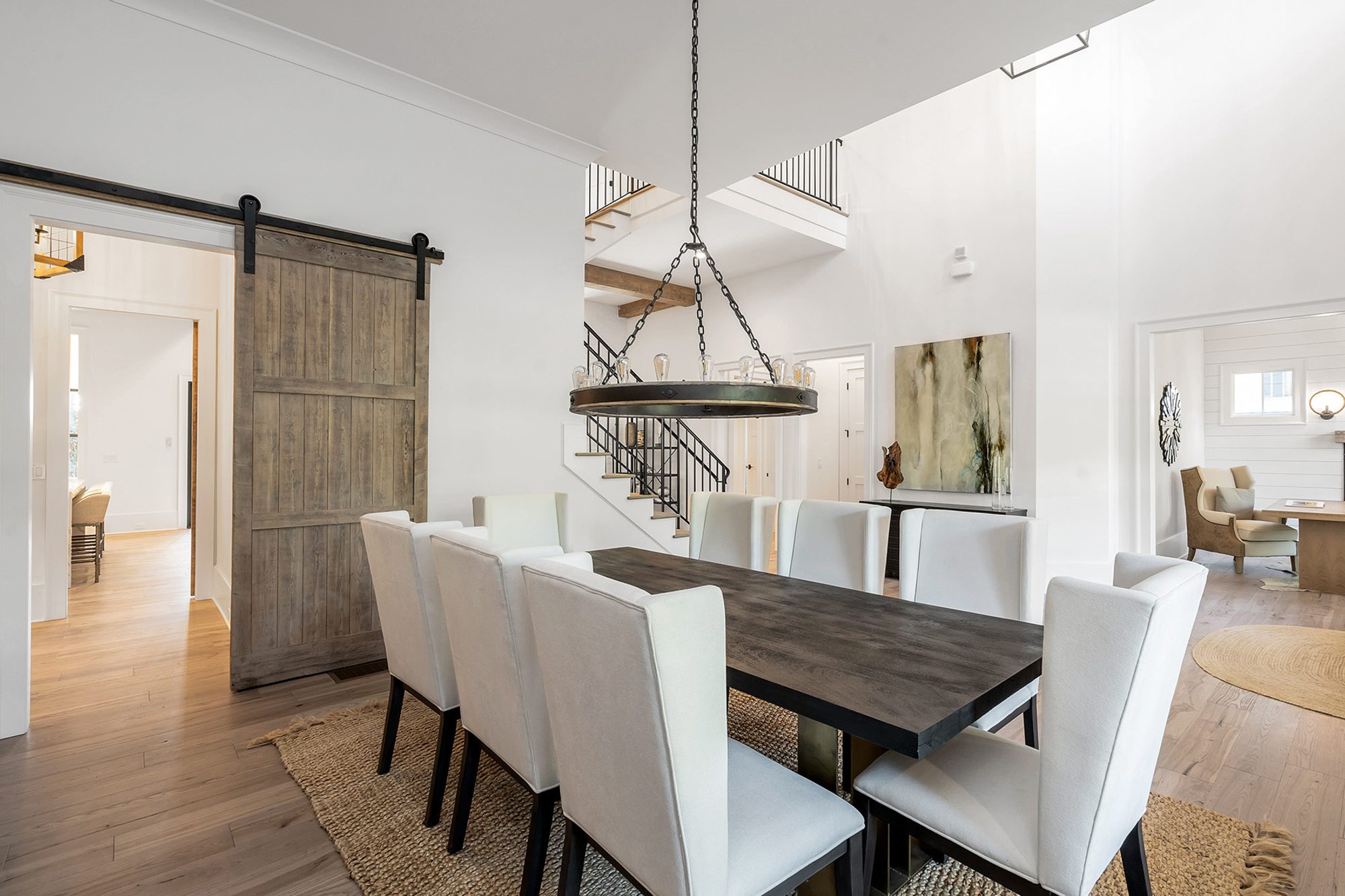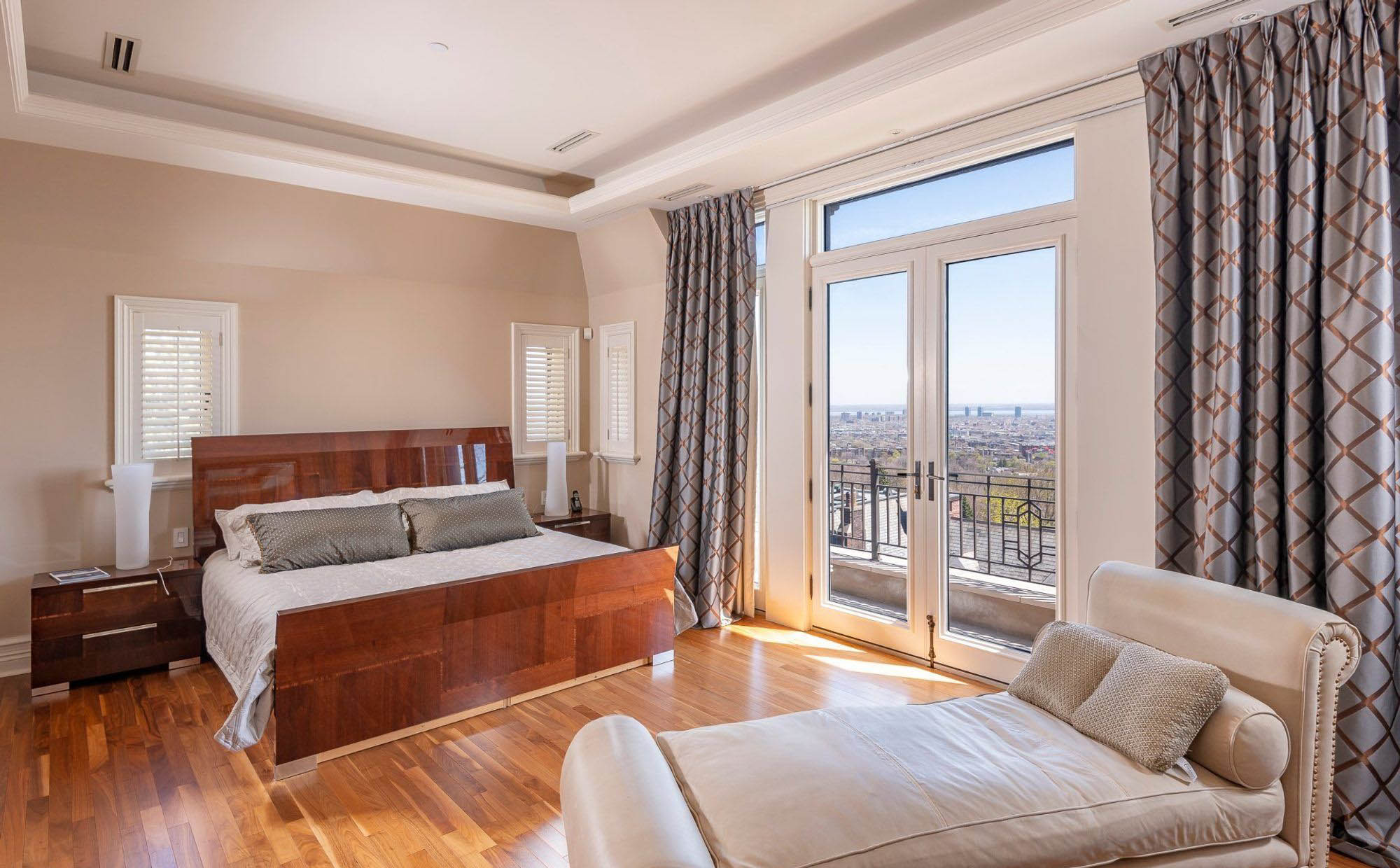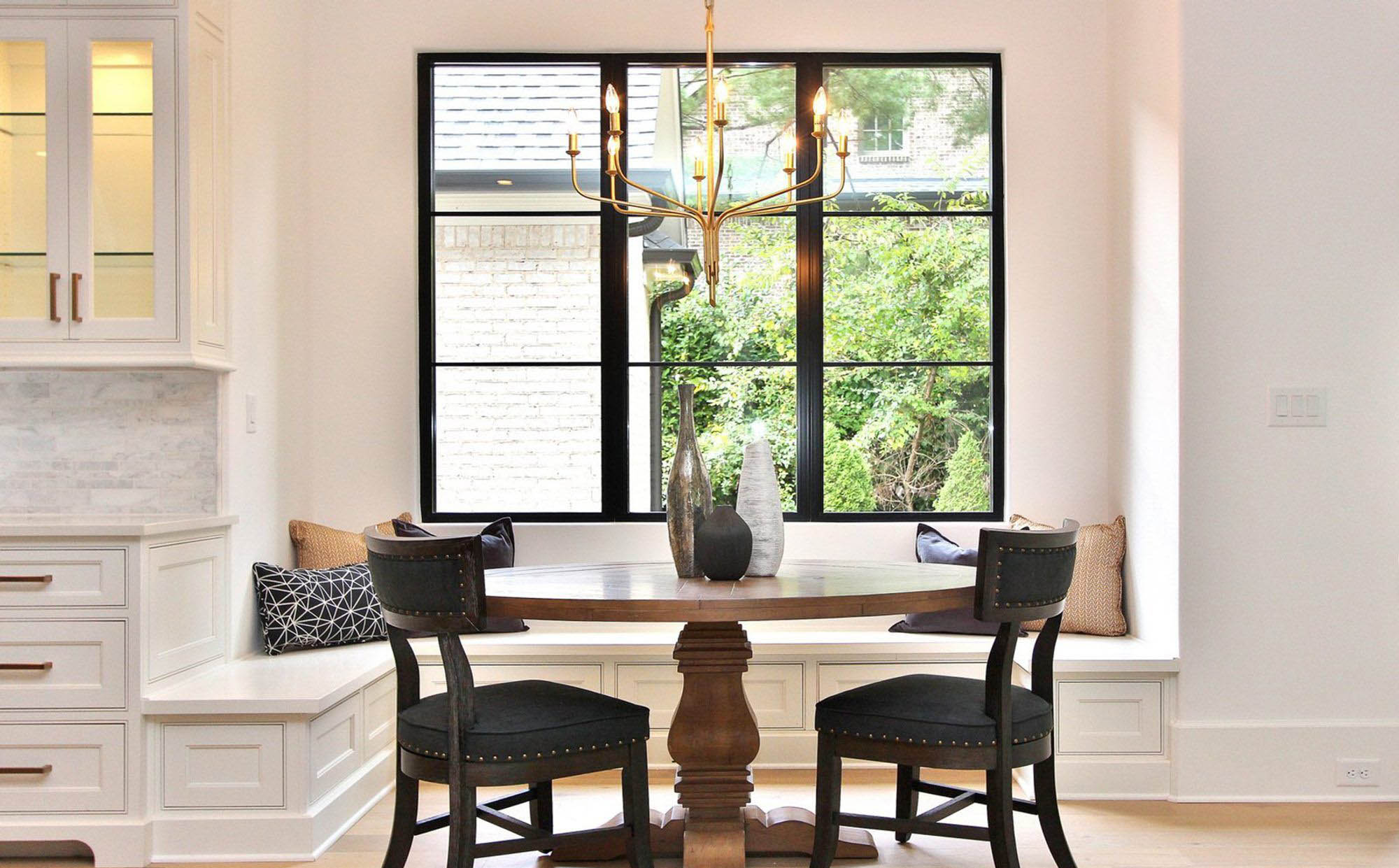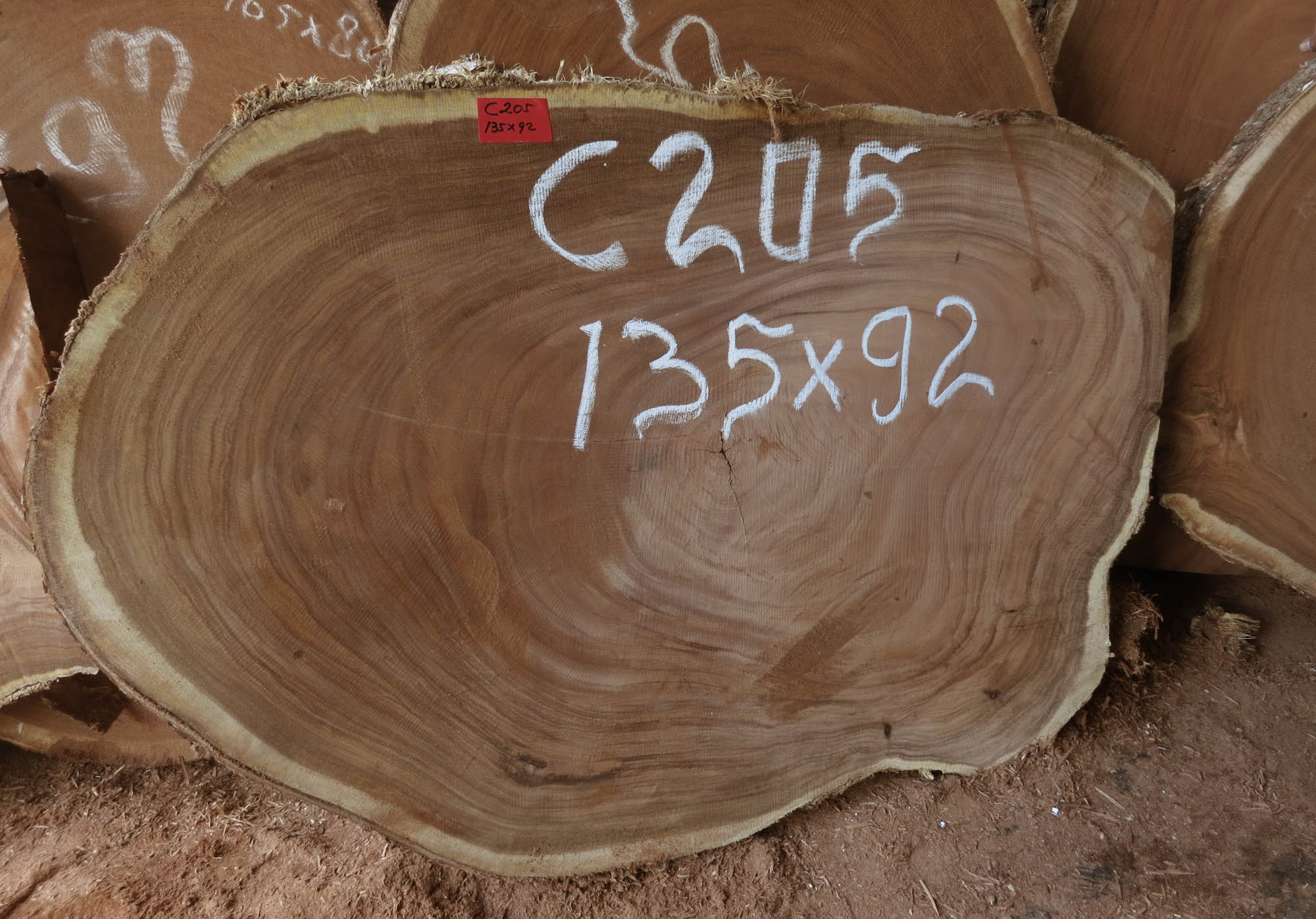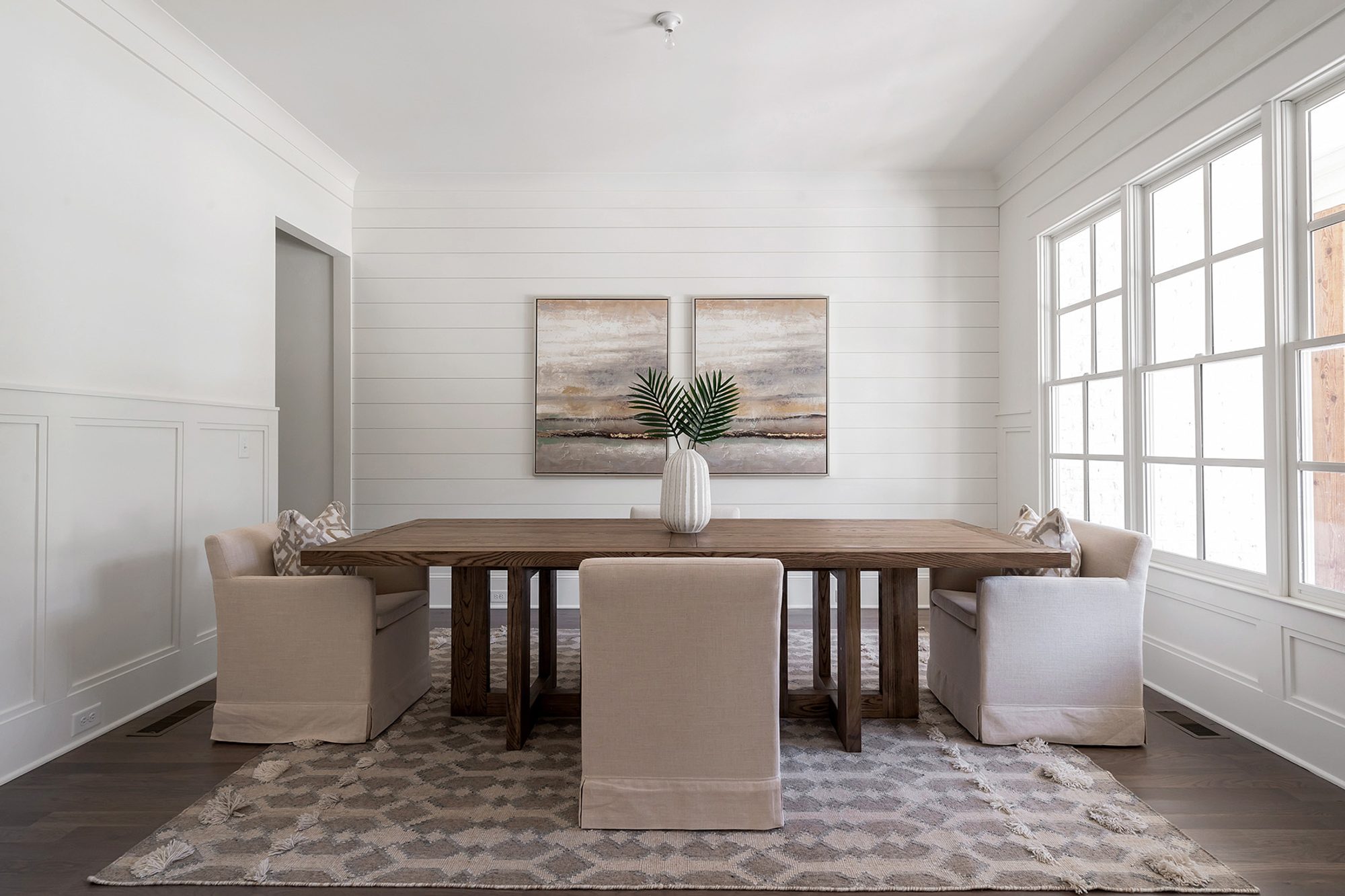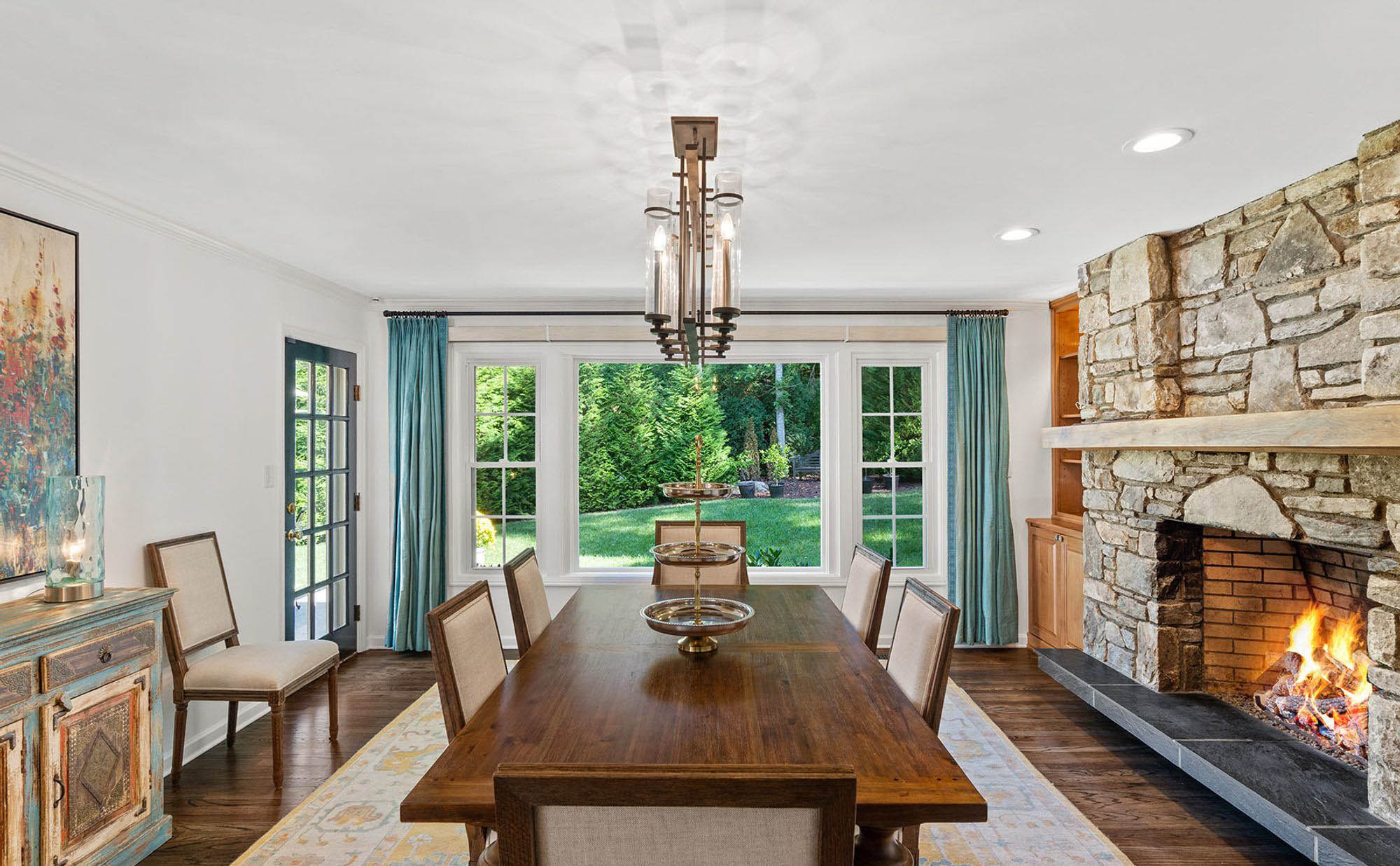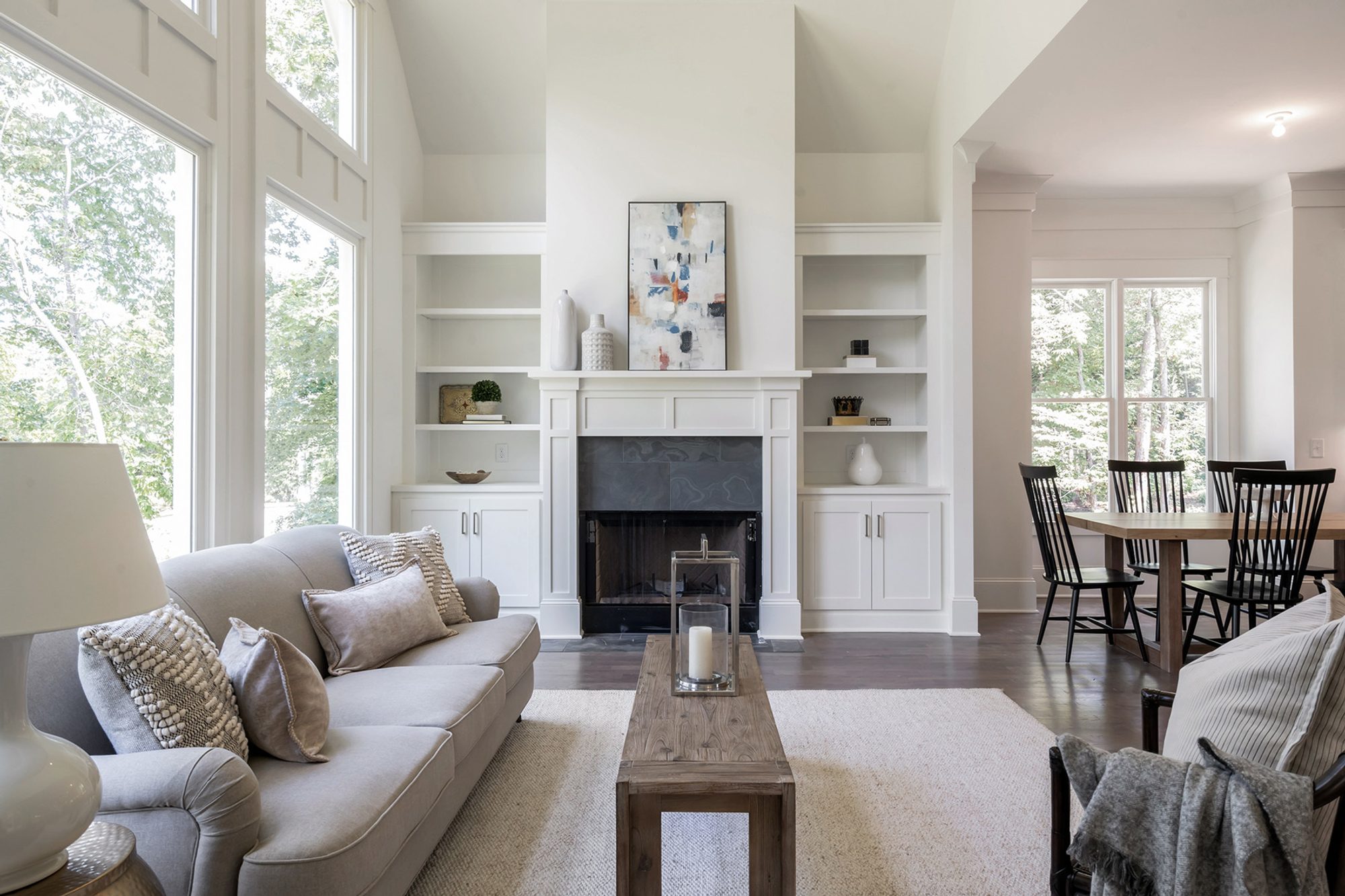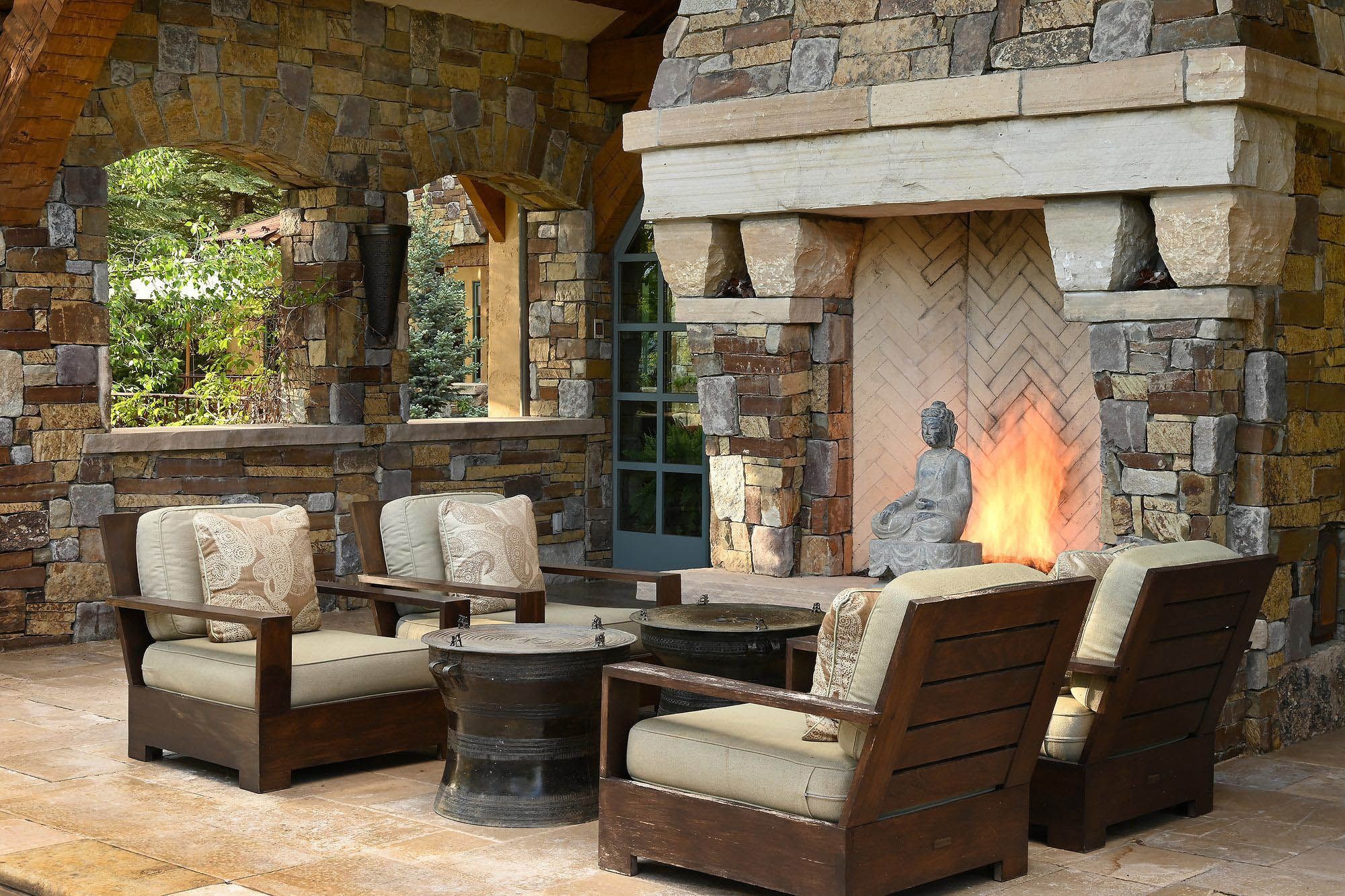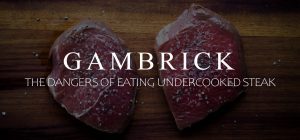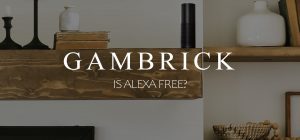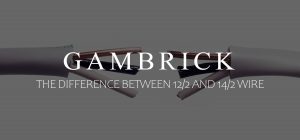What Is Acacia Wood?
Acacia wood, also known as Mimosa, Thorntree, and Wattle, comes from Australian-native Acacia trees and shrubs. But it also grows in Asia, the Pacific Islands, Africa and parts of the Americas. There are over 1,350 varieties of Acacia wood growing worldwide, most of which are native to Australia. The wood has extremely high durability, density, and strength, which makes it a fantastic choice for furniture, flooring, countertops and other finished wood projects.
Acacia wood is a very dense and durable hardwood with a tight grain pattern. It’s resistant to rot, moisture, and pests, which makes it an ideal wood for indoor and outdoor furniture, decking and wet areas like kitchens and baths. Because it is both highly durable and water-resistant, even even when left untreated, it can last well over 30 years.
One of Acacia wood’s best properties is it’s natural grain and rich color that can range from light brown to dark red. It’s durable, scratch resistant, doesn’t warp easily and is highly resistant to fungus. But it’s the color and natural grain that makes it such a beautiful wood for making furniture and finished items like countertops and cabinets. It also takes stain extremely well which makes it a highly versatile wood for finish work.
Because Acacia wood is such a dense hardwood, it’s naturally antibacterial, which makes it safe to use for preparing or serving food. This is why it’s used to make wood dishes, cutting boards, countertops and serving trays.
Acacia Wood Comes From The Acacia Tree
The acacia tree, also known as Mimosa, Wattle, or Thorntree, is native to Australian native Acacia trees and shrubs. But there are more than 1,350 different varieties grown around the world in places like Asia, Europe, and the Americas. Each tree is slightly different depending on the local climate and soil conditions. The wood is very durable, dense, and strong, which makes it an ideal choice for furniture, flooring, countertops, and other finished wood projects.
Acacia is a sub-tropical hardwood tree that’s native to Australia, but it’s adaptable and can grow in a variety of climates. It’s a hardy tree that grows fast and easy in just about any soil condition. This is one of the reasons why you can find some type of Acacia wood growing on just about every continent around the world.
- Water-Resistant: Acacia wood is so dense that it’s almost 100% waterproof and doesn’t warp easily.
- Antimicrobial: The wood is naturally resistant to fungal growth which makes it great for kitchen use.
- Smooth & Dense: Acacia is a great wood for furniture and cabinet making because it’s smooth, dense, and scratch resistant.
- Holds Stain: Acacia has a beautiful grain and absorbs stain well which is great for finished wood items.
The wood of an Acacia tree is dense, durable, scratch resistant, resistant to fungus, and almost 100% waterproof, which makes it well suited to make furniture, countertops, flooring, and kitchen items like bowls, plates, and trays.
Characteristics Of Acacia Wood
Acacia trees are very adaptable to a variety of climates and soil conditions and grow fast. They’re a hardy tree that changes based on where it grows, so each of the 1,350 varieties of Acacia growing all over the world are slightly different. The wood is strong, durable, dense, and resistant to water and fungal growth. It has a beautiful color, great natural grain, and takes stain very well.
| Attribute | Description |
| Color | Rich color that can range from yellow to light brown and/or dark red |
| Appearance | Beautiful color with a very attractive natural grain pattern |
| Grain | Acacia has a beautiful grain that’s medium to coarse with a straight to wavy pattern |
| Rot Resistance | Because it’s so dense, durable, and water resistant, Acacia wood is also resistant to rot |
| Workability | Acacia is easy to work with but it’s quite dense so you need very sharp tools to get a clean cut |
| Odor | The scent has a warm, honey-like quality that’s used to make incense for rituals in Nepal, India, and China |
| Density | Acacia is extremely dense and hard rating 2300 on the Janka hardness scale, which is 55% harder than white oak |
| Pricing | More expensive than oak but costs less than teak and some other exotic tropical hardwoods |
| Resistances | Acacia is extremely dense which makes it naturally resistant to rot, fungal growth, warping and scratches |
Because of Acacia woods wide range of benefits, it’s an ideal wood for indoor and outdoor furniture, cabinets, countertops, and kitchen items like plates, bowls, and cutting boards.
Acacia Wood Is Durable
Acacia wood is extremely dense which makes it durable and water resistant. The hardness of wood is measured in a range called the Janka scale. The Janka test measures the amount of force required to embed a 0.444″ steel ball into the wood to half of its diameter. Woods with a higher rating are harder than woods with a lower rating.
All acacia wood scores high on the janka scale, but some species are harder than others.
- Large leaf Acacia wood has a Janka hardness rating of 1700.
- Hawaiian Koa Acacia wood has a Janka rating of 1790.
- Small leaf Acacia wood has a Janka hardness rating of 2220.
- Babul Acacia wood has a Janka rating of 2300.
- Australian Blackwood Acacia wood has a Janka rating of 1160
Each species of Acacia wood falls within the range of 1100 – 2500 on the Janka scale.
Acacia wood is over 50 percent harder than European White Oak, 20 percent harder than hickory, and 90 percent harder than carbonized bamboo on average.
It has an average density rating of around 60 pounds per cubic foot. Compare that with oak which is 45 lbs/cubic foot. Even when compared with maple, one of the hardest domestic woods which ranks 1,450, Acacia wood easily wins.
Acacia’s rating is even higher than popular species like hard maple and even oak, which are both known for their density and durability.
Because acacia wood is so hard and dense, it’s ideal for indoor and outdoor furniture, cabinets, countertops, serving trays, bowls, and other finished wood products that see lots of wear and tear.
Acacia Wood Grain
The texture and grain of acacia wood varies by species. But overall, it has a slightly curvy to straight uneven grain and a smooth texture. Because of how dense acacia is, you can sand the grain super smooth, without any noticeable pores or grit. This makes staining and painting the wood very easy to do. And no two pieces are exactly the same so choose your slabs carefully.
Acacia can contain knots so be careful when ordering large slabs for furniture, cabinets, or doors. Knots work well if you’re building a large table and filling them with resin, but they’re not great for cabinet doors or countertops.
Acacia Has A Beautiful Color
Acacia wood has a rich color that ranges from yellow to golden brown and even dark red or deep brown when it ages. Because it has such beautiful color when natural, many people don’t stain it. Instead, they seal it with mineral oil to keep the wood from drying out. However, acacia takes stain really well, so it’s easy to change the tone or hue in a variety of ways.
Acacia wood’s color lasts over time, especially if you treat the wood with mineral oil or a sealant with UV protection. However, even when left bare, it resists fading and remains a rich color for years. But eventually, it will start to lighten when exposed to direct sunlight for too long.
Because there are so many species of acacia growing all over the world, it can be challenging to find furniture pieces that look exactly alike. If you want more of a homogeneous look for your furniture, flooring, and other wood finishes, you have to be very careful about choosing the same acacia species.
Make sure the acacia wood you use is the same species and from the same region. This will make matching the grain pattern and color much easier. For example, I make acacia wood furniture and use either Hawaiian Koa or Australian Blackwood because they’re easy to source in the United States.
Water Resistance
Because of how extremely dense and hard the wood is, acacia wood is naturally water-resistant and antimicrobial. While most wood furniture must be protected from water with sealants, acacia can be left outside without any protection. It’s highly resistant to warping, cracking, splitting and twisting because of excess water exposure. The wood is naturally so dense, water pools and runs off its surface rather than being absorbed.
Acacia is also highly resistant to fungal growth. Water can’t penetrate so it doesn’t have a chance to grow mold or fungus.
- Acacia wood is water resistant, not waterproof.
- Because water doesn’t penetrate easily, it’s also highly resistant to fungal growth.
- Standing water for long periods of time can eventually cause the furniture to swell and/or warp.
- Regular amounts of rain or dew are fine, but keep acacia furniture from being submerged in water.
Keep in mind that acacia furniture is water-resistant, not waterproof. You shouldn’t allow it to sit in standing water, especially along the cut ends because eventually moisture will soak in. Long-term exposure to large amounts of water could cause acacia to warp or swell. However, this isn’t something that will happen from regular exposure to rain or dew.
Products
Acacia wood products like furniture, countertops, cabinetry, and kitchen items like cutting bowls, bowls, and plates are excellent choices for indoor and outdoor use. It’s a highly dense wood that’s durable, resilient, and resistant to water and fungal growth. This makes it ideal for wet areas like kitchens, baths, or the outdoors. It’s also a charming wood that’s super smooth and takes stain well. But even if you leave it natural, the color is excellent, easy to maintain, and has a fantastic grain pattern.
- Acacia is very popular for furniture and finished kitchen products.
- Kitchen dishes, bowls, and cutting boards are commonly made of acacia wood because they are incredibly dense and resistant to bacterial growth.
- It’s resistant to fungal growth and moisture damage.
- Very easy to maintain.
- Doesn’t need protective sealants.
- Oil your acacia to bring out a richer, more natural tone.
Keeping the wood clean is all that’s needed to maintain acacia products. They don’t require protective sealants or stains. However, once or twice a year, some oil can prevent the wood from drying out and will bring out a richer color.
Wash acacia furniture with regular warm, soapy water, then dry with a soft cloth or paper towels. Don’t use silicon or ammonia-based cleaners or anything harsh that contains chemicals.
The most significant things to worry about are warping if the wood is exposed to large amounts of standing water for long periods and some fading from constant exposure to sunlight.
Is Acacia Wood Sustainable?
Acacia wood is considered sustainable because it’s adaptable and grows fast and easy in various climates and soil conditions. It’s a hardy tree that grows naturally worldwide without fertilizer or pesticides as they are bug and fungus-resistant. When mature trees are harvested, they’re easy to replant with saplings which have little trouble growing to maturity in just a few years.
If you want the most Eco-friendly acacia products, look for the FSC-certification. This means the process used to grow and harvest the wood has passed the strict standards of the Forest Stewardship Council, a global non-profit that helps promote the responsible management of the world’s forests.
How Fast Do Acacia Trees Grow?
Depending on the species, climate, and soil conditions, acacia trees can grow 1-3 feet per year. Although they don’t need fertilizer, if you give it to them they’ll grow even faster. On average, they grow 15-25 feet tall, so under the right conditions, they can reach full maturity in just 5-8 years. The trees are very hardy and resistant to pests, so they don’t require watering or pesticides.
Is Acacia Furniture A Good Value For The Money?
Acacia wood furniture is a great value for the money when compared to other hardwoods used to make furniture like maple and oak. It’s extremely durable, water resistant, beautiful, long-lasting, and resistant to water and fungal growth. Although the upfront cost of Acacia furniture may seem high, it will last a lifetime when properly cared for and is considered a premium-grade product that holds up when used outdoors with almost no maintenance.
Less expensive wood is easier to damage, fade, warp, or split and may grow mold and fungus. So when you consider how durable acacia wood is and how hard it is to damage, the ROI on a piece of furniture is a good value for the money.
Prices Vary
Acacia wood grows all over the world including in Asia, India, the Middle East, Australia, and The Americas. It’s also grown commercially on plantations for its wood, thorns, roots, and even its tree sap, which is known as Gum Arabic. Gum Arabic is used for medicinal purposes, as an additive to soft drinks, and as the outer coating for hard shell candies like M&Ms. In general, harder and darker species of acacia are more expensive than lighter colored less dense varieties.
Because it’s so widely available, farmers can harvest the wood for a lower cost. However, with over 1300 species used for all sorts of purposes, prices vary quite a bit depending on the species you buy and the quality of the wood.
- High-end furniture and cabinet makers use Acacia because of its density, color, and beautiful grain.
- Premium cuts of wood aren’t cheap and make Acacia wood one of the most expensive furniture-grade woods you can buy. Especially for large slabs which are needed when you make a table or cabinetry.
- The darker and denser the wood the more expensive it is.
- Slabs with a nicer grain pattern and fewer knots are more expensive.
If you’re making bowls or a serving tray out of a lighter-colored Acacia wood then you can buy it cheaper. However, for a premium large slab with good color and attractive grain, expect to pay a lot more.
Acacia Wood Is A Lot Like Teak
Acacia wood is considered an alternative to teak when used to make outdoor furniture. Both are very durable wood that looks great, takes stain well, and holds up in the outdoors with very little maintenance. But acacia is less expensive than teak and ranks a bit higher on the Janka hardness scale. One difference is that acacia has a lower oil content than teak, so it benefits from being oiled once or twice a year. Because of how similar they are in terms of durability, longevity, and looks, I prefer acacia because it’s cheaper for essentially the same quality wood.
What Is Acacia Wood Used For?
Acacia wood has been used by cultures around the world for centuries to produce a variety of products. It’s still widely used today for all sorts of purposes. Some woodworkers claim that even when left untreated, Acacia wood products will last for decades without showing any signs of aging.
Acacia wood’s durability means it won’t scratch, bend, twist, or warp easily. This is a huge benefit when making outdoor furniture that gets wet or is exposed to lots of direct sunlight. It’s also not an easy wood for bugs to chew into because of how hard it is.
- Acacia wood is commonly used to make bowls, cutting boards, and other kitchen products.
- Canoes and other boats are made out of Acacia because it’s durable and floats well.
- It’s made into ukuleles because of its natural resonance.
- Flooring, parquet, stair rails, veneers, and wardrobes.
- In Central America, some species grow fat thorns which are made into jewelry, dolls, and other souvenirs.
- Finished wood beams are made of Acacia because of the wood’s strength and beautiful looks.
- It’s used to make cabinets, carvings, and furniture.
Acacia’s water resistance means the wood won’t warp or buckle and is resistant to fungus and mold growth. Another useful quality when making outdoor furniture. Acacia is also naturally antibacterial which makes it safe enough to use for preparing or serving food. This is a great quality for kitchen countertops or serving trays.
Acacia Wood Pros & Cons
Acacia wood is beautiful and durable hardwood, but there are disadvantages of acacia wood that you should consider before you purchase it.
Pros
- Durability: Acacia wood is long-lasting, dense, rot and insect-resistant. It does resist moisture, but it is not waterproof.
- Sustainability: Acacia trees are fast-growing and can be harvested in a way that is sustainable. They are a good replacement for more slow-growing teak wood.
- Beauty: Acacia has a gorgeous color from yellow to deep mahogany. The varied grain and knots are beloved by many for its rustic quality.
- Low Maintenance: Acacia wood is easy to maintain over time. Acacia furniture keeps its color well. You can oil acacia wood to keep it looking its best, but in general, you can clean it with just soap and water.
- Grain:
- Color:
- Resistances:
Cons
- Cost: Acacia wood is more expensive than domestic hardwood varieties like maple and oak, but it has greater longevity.
How To Care For Acacia Wood Products
There are so many different type of Acacia wood products there’s no one best way to care for them all. We’ll break things down into a few smaller categories to make care a little easier.
Acacia Wood Kitchen products
Kitchen products like plates and serving trays made from acacia wood should be hand washed but not soaked in water or exposed to extreme hot or cold temperatures. Acacia wood products, like all wood products, shouldn’t be washed in the dishwasher. For best results, refer to the care instructions on your acacia wood product.
Acacia Furniture And Cabinetry
Acacia wood furniture or cabinetry should be cleaned just like any other wood product. Spray and wipe them down with a simple cleaning product that’s safe to use on wood and a soft cloth, rag or paper towels. Don’t soak them in water and don’t let water sit on them for too long or you could get water spots.
Vary the cleaning product based on the type of finish your furniture has. If it’s varnished, painted or natural could have different cleaner requirements.
We recommend simple cleaning solutions that are safe on bare wood because they should be mild enough to work on varnish or paint too. We like to use a spray bottle filled with warm water and a little soap.
Oiling or waxing your wood once a year with a soft brush is enough to preserve the woods moisture and color. You don’t have to do it but some people swear by it. It really depends on the home and how much humidity is in the air. If you live in a very dry climate then oiling the wood can help prevent cracking. However in humid climates the woods should be fine on it’s own.
Excess oil should be gently wiped off with a soft cloth or rag an hour or so after treatment.
If you want your furniture to last for generations then consider these tips:
Furniture made with Acacia wood is like a living thing. For a longer lasting piece, proper maintenance is very important.
- Too much water and wood cells will swell, too little and they will shrink, causing cracking.
- Wipe the furniture daily with a slightly damp soft cloth to remove all dust and pollen. Some moisture will stay behind and get absorbed into the wood.
- Avoid alcohol, deodorants, perfumes, nail varnishes and other similar liquids. If a spill occurs, wipe as soon as possible with a dry cloth. These liquids will pull moisture from wood which causes cracks. Alcohol such as red wine can stain the wood.
- Keep your furniture out of prolonged direct sunlight. This can cause fading and in some cases cracking.
- Keep furniture away from the fireplace or radiators because this can cause warping.
- Use placemats and coasters when possible.
- Avoid cleaning your furniture with a rough surface.
- Avoid polish or cleaning products containing silicone. These can dry out Acacia wood over time.
- Don’t use detergents or any cleaning products that contain ammonia. These will take moisture out of the wood.
- Due to how hard Acacia wood is, you don’t have to worry about scratching as much as with other woods. If a scratch does appear, use a touch up marker to or stain conceal the scratch.
Acacia Wood Outdoor Furniture
Outdoor furniture made out of Acacia wood should be sealed. Even though it’s a hard wood it can still rot or get infested by bugs if allowed to sit outdoors without proper care. It doesn’t matter if you stain or paint it or if the seal has a sheen. If you want a natural look then use a sealant with no shine and no color.
A sealer will help stop water from penetrating inside the wood grain and it’ll stop bugs. But you have to maintain it. No single coat of sealer last forever. We recommend re-sealing every season. When it rains you’ll notice how water beads and runs off sealed wood much better than when it’s left untreated.
Cleaning should be done just like indoor wood furniture. Wipe pollen or dirt off with a soft cloth, rag or paper towels after spraying with water and a simple cleaning solution.
Acacia wood makes a great flooring product. It’s dense, hard to scratch, resists mold, doesn’t buckle and looks great.
Acacia Wood Flooring
Acacia wood is a wonderful material for flooring. it’s durable and very dense, doesn’t scratch easily and has a beautiful color and grain. And because of how dense the wood is, it’s doesn’t absorb water easily which makes it great for use in kitchens and baths.
It’s grain patterns are unique with colors ranging from golden tans, deep dark browns, lighter brown, and even some off white colors. The primary color of your flooring will be the one you choose, but expect to see shades of all these other colors beautifully mixed in. Acacia flooring adds distinctive style and charm to your home.
It’s also very easy to maintain. Just sweep up any dust that collects on a routine basis or use a damp mop when you need to. No special cleaning products are needed and we recommend a simple soapy water solution.
Acacia has a natural resistance to things like warping, twisting, buckling and swelling so your wood floors will lay tight and flat without squeaks.
If you are sensitive to mold and mildew, then this is a great flooring option for you.
It’s naturally resistant to mold like most dense hardwoods. This applies to both solid and engineered acacia hardwood flooring. So if you’re considering using hardwoods in your kitchen or other damp areas of the home then Acacia wood is a good material to consider.
How Much Does Acacia Wood Flooring Cost?
While acacia wood flooring is more expensive than some other flooring products, it’s not the most expensive wood flooring you can buy.
Here are some general guidelines on what to expect when shopping for acacia wood flooring:
- Acacia solid hardwood flooring costs between of $3 to $8 per square foot to purchase.
- Engineered acacia wood flooring ranges from $2.50 to $8 per square foot.
- Acacia laminate wood flooring runs from approximately $0.75 to $3.50 a square foot.
Since hardwood flooring is pretty easy to install, you can do it yourself to save some money. If you don’t have the equipment you can rent it at just about any Home Depot. If you prefer to have it professionally installed, here’s what you can expect to pay:
- Solid and engineered acacia wood flooring will cost between $3 and $8 for installation.
- Laminate acacia flooring will range from $1.50 to $3 for installation.
Keep in mind that these are estimates. Factors such as where you live, the brand and style you choose, and difficult installation areas such as a staircase can impact the price. You also need to account for the flooring design. Some have inlays or fancy borders which would all be extra. Also staining is a factor. Colors and types of stains will vary as well as the design. If you have a two tone design with a fancy border then it will of course cost more than a single color.
Is Acacia Wood Easy To Work With?
Before it fully dries Acacia wood is easy to work with. However, after it dries, Acacia becomes very hard and durable. This allows us to make beautiful acacia wood furniture and cabinetry.
Because of how easy it is to work with prior to drying, we can carve and even bend it into all sorts of shapes and designs.
As hard as Acacia wood is when it fully dries, when moist it’s pretty flexible. With a little heat and moisture you can you can work it into all sorts of creative shapes.
Once Acacia wood has fully dried it’s harder to work with but not impossible. We can still cut, rout, drill and carve it into pieces that make fantastic finished products. It just gets a lot harder. Bending the wood is a big problem once it’s dried so we’d highly recommend doing this when the wood has a higher moisture content.
Overall, we’d say Acacia wood is pretty easy to work with.
Is Acacia Good For Burning?
As a general rule of thumb, harder woods burn much better and hotter than softer woods do. And Acacia is a very hard wood.
Typically you can expect about the same amount of heat and longevity per log as with oak. Keep in mind however that there are over 1000 species of Acacia wood. The harder the wood the better it is. So if your goal is to use the wood for burning then buy the harder types. The problem is that harder species of Acacia are also used for furniture making because they tend to have a nicer color and grain.
You don’t want to compete with furniture makers for fire wood so buy the scraps that are left over. They can’t be used for making anything so you can buy them cheap.
Any type of Acacia wood is good for burning. Even softer types are still very dense so you really can’t go wrong no matter species you buy.
Acacia Wood Product Gallery
Here are a bunch of photos and information about some of our favorite Acacia wood products.
Acacia hardwood flooring with a wide plank and light stain. The wood has a very nice grain pattern with barely any knots.
Lightly Stained Acacia Wood Flooring
Acacia wood is a great material for wood flooring. It’s very durable and comes in a few different forms. With over 1000 different species of Acacia wood, chances are you can find a color and grain you like.
Furniture or countertops can be cut out of a large wood slab. This one has been marked for a table.
Acacia Wood Slab
This huge real wood slab has been chalked for a long table or countertop.
Acacia wood flooring stained a medium brown with a slight sheen. Acacia is a fantastic flooring material.
Medium Brown Stained Acacia Wood Flooring
Medium brown stain with a very light sheen is a fantastic look in this while colored living room. We recommend keeping the flooring sheen as dull as possible, egg shell is about as shiny as we like to go.
Acacia hardwood flooring with no stain. Just a light seal is more than enough with a beautiful hardwood like Acacia.
No Stain Wide Plank Acacia Flooring
This floor features wide plan Acacia with no stain and an egg shell finish. The wood is so beautiful all by itself you really don’t have to alter it much.
Acacia wood is great for making all sorts of products which include bed frames. This frame is made up of multiple Acacia panels, stained a medium brown with a high gloss finish.
Acacia Wood Bed Frame
You can build just about any wood product out of Acacia which includes a bed from. Multiple panels can be cut and secured together with varying grain direction to achieve this look. A light brown stain with high gloss varnish complete the look. Matching end tables and other furniture pieces were also made that are out of view.
Acacia wood kitchen table with round top and carved base with wooden chairs. Simple light brown stain and egg shell varnish.
Acacia Wood Table
Kitchen tables and other furniture pieces can be made out of Acacia wood. It’s a great material for the kitchen because it doesn’t scratch easily, resists mold and water.
A wood Sliver like this can be used to build a medium sized round table.
Acacia Wood Sliver
Large wood slices are sold for big dollars depending on the species of Acacia, the color and grain. It’s not uncommon to see prices well over $500 per piece. This can be cut to build a single piece round wood kitchen table.
Solid wood slab dining room table with a natural curved edge. No stain and a simple flat sealant.
Solid Slab Dining Room Table
Solid slabs can be bought and made into all sorts of furnishings including a dining room table. If your wood has a nice color and beautiful grain like this then all you need is a simple flat varnish. Even the edges can be left uncut so the table has a natural edge.
Dining room with a modern design. Shiplap walls with wainscoting. Muted grayish brown stains.
Modern Acacia Wood Dining Room Table
This modern dining room has a muted gray stain that matches the floor and goes beautifully in this all white room featuring shiplap and wainscoting.
Rustic dining room table with a stone fireplace.
Rustic Acacia Wood Dining Room Table
A real wood dining room table with light brown stain and light varnish is a beautiful way to finish a dining room. This fantastic fireplace features a real stone surround, mantle and hearth.
Real wood coffee tables with a light stain and varnish will always be in style and work with a huge variety of home styles.
Acacia Wood Coffee Table
Wood coffee tables have been around practically forever and they’re not going anywhere. The design is simple. All you need is a light brown stain and simple varnish. Choosing a material with a nice grain is key.
Beautiful wood cabinetry and built in refrigerator door panels. Rich brown stain with an egg shell varnish.
Acacia Wood Cabinetry
Real wood cabinetry and refrigerator door panels with rich brown stain and an egg shell finish. Shaker style with with flat panel designs.
Wood countertops are a beautiful finish and you have more options then just a simple butcher block look.
Acacia Wood Slab Countertops
If you like the look of a wood slab countertop in your kitchen then you have more option than just a simple butcher block. Acacia is a wonderful choice. It’s very dense so it doesn’t scratch easily, it resist mold and mildew and is naturally anti bacterial. It resists water and looks fantastic.
Real wood kitchen cabinets with a beautiful grain, medium brown stain and light finish.
Acacia Wood Kitchen Cabinets
If you lie the look of real wood cabinets like this then it’s all about the grain. That’s why Acacia wood is such a great choice. Not many species of wood have a grain this nice.
This real wood super slim coffee table design is sleek. Stained a muted gray brown with no shine.
Natural Acacia Wood Coffee Table
This super slim real wood coffee table has a muted gray brown stain and no shine. It’s all about the grain. The slim design gives it a modern, sleek look.
This beautiful outdoor living space features a huge real stone fireplace with matching stone walls, stone tile flooring and wood furniture.
Acacia Wood Outdoor Furniture
This beautiful outdoor living space features a wonderful real stone fireplace with matching stone walls and stone tile floors. Real wood furniture made from Acacia wood with brown stone and no sheen.
Odd shaped damaged wood slice with lots of knots taken out marked for sale.
Damaged Acacia Wood Sliver
Damaged wood slices will sell for a lot less money because you’ll get smaller usable pieces out of them. You can’t make a one piece table or countertop out of this but it’s great for small furniture pieces. Slices like this have so much left over that the pieces are sold for firewood.
Summary: What Is Acacia Wood?
Acacia wood, also known as Mimosa, Thorntree, and Wattle, comes from Australian-native Acacia trees and shrubs. But it also grows in Asia, the Pacific Islands, Africa and parts of the Americas. There are over 1,350 varieties of Acacia wood growing worldwide, most of which are native to Australia. The wood has extremely high durability, density, and strength, which makes it a fantastic choice for furniture, flooring, countertops and other finished wood projects.
Acacia wood is a very dense and durable hardwood with a tight grain pattern. It’s resistant to rot, moisture, and pests, which makes it an ideal wood for indoor and outdoor furniture, decking and wet areas like kitchens and baths. Because it is both highly durable and water-resistant, even even when left untreated, it can last well over 30 years.
One of Acacia wood’s best properties is it’s natural grain and rich color that can range from light brown to dark red. It’s durable, scratch resistant, doesn’t warp easily and is highly resistant to fungus. But it’s the color and natural grain that makes it such a beautiful wood for making furniture and finished items like countertops and cabinets. It also takes stain extremely well which makes it a highly versatile wood for finish work.
Because Acacia wood is such a dense hardwood, it’s naturally antibacterial, which makes it safe to use for preparing or serving food. This is why it’s used to make wood dishes, cutting boards, countertops and serving trays.
If you have any questions or comments e-mail us any time.
